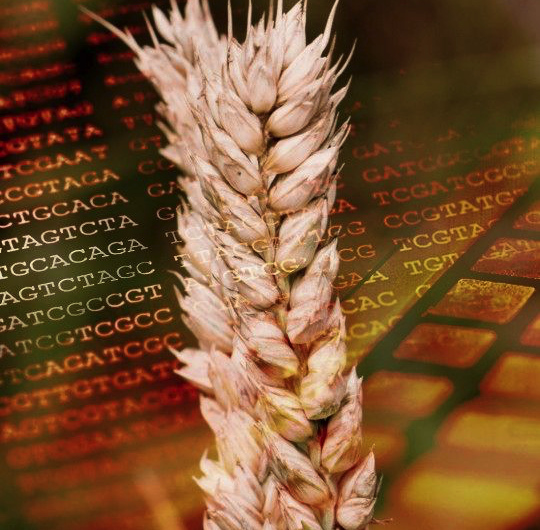Wheat sequencing consortium releases key resource to the scientific community

Following the January 2016 announcement of the production of a whole genome assembly for bread wheat, the International Wheat Genome Sequencing Consortium (IWGSC), having completed quality control, is now making this breakthrough resource available for researchers via the IWGSC wheat sequence repository at URGI-INRA-Versailles, France.
Wheat breeders and scientists around the world will be able to download and use this invaluable new resource to accelerate crop improvement programs and wheat genomics research. The dataset will facilitate the identification of genes associated with important agricultural traits such as yield increase, stress response, and disease resistance and, ultimately, will make possible the production of improved wheat varieties for farmers.
Since the January announcement, the IWGSC project team has been fine-tuning the data so that the genome assembly released to the scientific community is of the highest quality possible. The resource released today – based on Illumina sequencing data assembled with NRGene's DeNovoMAGICTM software – accurately represents more than 90 percent of the highly complex bread wheat genome, contains over 97 percent of known genes, and assigns the data to the 21 wheat chromosomes.
This data release represents the IWGSC continued effort to produce a "gold standard reference sequence" – the complete map of the entire genome that precisely positions all genes and other genomic structures along the 21 wheat chromosomes. The wheat genome is large – five times that of the human genome – and complex, with three sets of seven chromosomes.
"The IWGSC policy has always been to make all data publicly available as soon as they have passed the quality checks," explained IWGSC Executive Director Kellye Eversole. "By doing so, the scientific community can start exploiting the data now while the Consortium progresses towards a gold standard reference sequence, anticipated to be released in 2017."
As is customary in the scientific community, the dataset is being made available for breeding and research under the "Toronto statement", which outlines rules for prepublication data sharing, under which the IWGSC reserves the right to publish the first analyses of the data, which includes descriptions of whole chromosome or genome-level analyses of genes, gene families, repetitive elements, and comparisons with other organisms. Detailed information on how to access the data is available on the IWGSC website.
Over the coming months, the IWGSC project team will continue its work towards completing a high quality, ordered sequence of the wheat genome that includes annotating and identifying the precise locations of genes, regulatory elements, and markers along the chromosomes, thereby providing invaluable tools for wheat breeders. The final result will integrate all genomic resources produced under the umbrella of the IWGSC over the last decade, including individual physical and genetic maps.
Wheat is the staple food for more than a third of the global human population and accounts for 20% of all calories consumed in the world. As the global population grows, so too does its dependence on wheat. To meet future demands of a projected world population of 9.6 billion by 2050, wheat productivity needs to increase by 1.6% each year. In order to preserve biodiversity, water, and nutrient resources, the majority of this increase has to be achieved via crop and trait improvement on land currently cultivated rather than committing new land to cultivation. As for other major crops, a well annotated reference genome sequence will be an invaluable resource towards this goal by providing the detailed maps of genes and gene-networks that can be improved through breeding.
Provided by International Wheat Genome Sequencing Consortium (IWGSC)





















